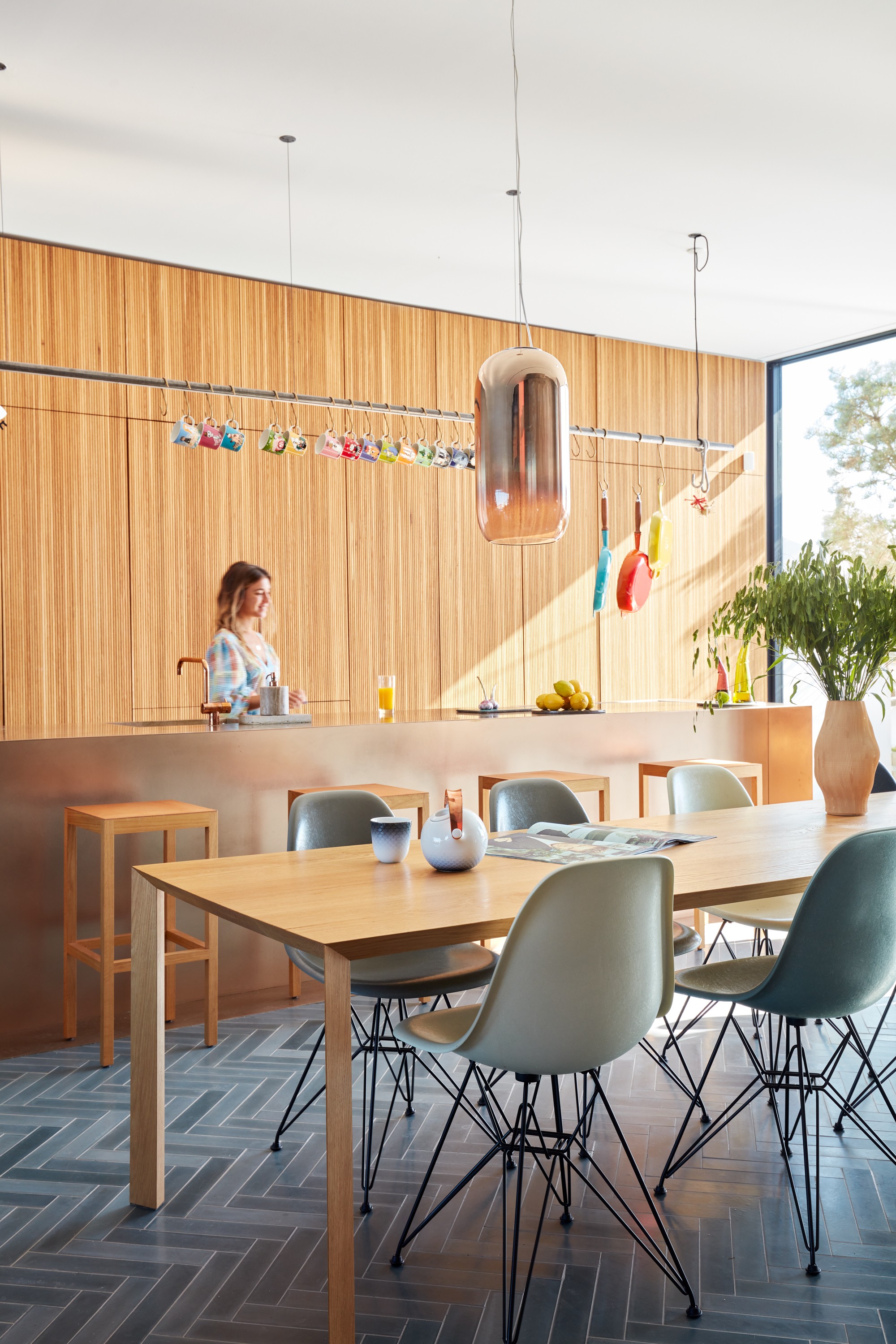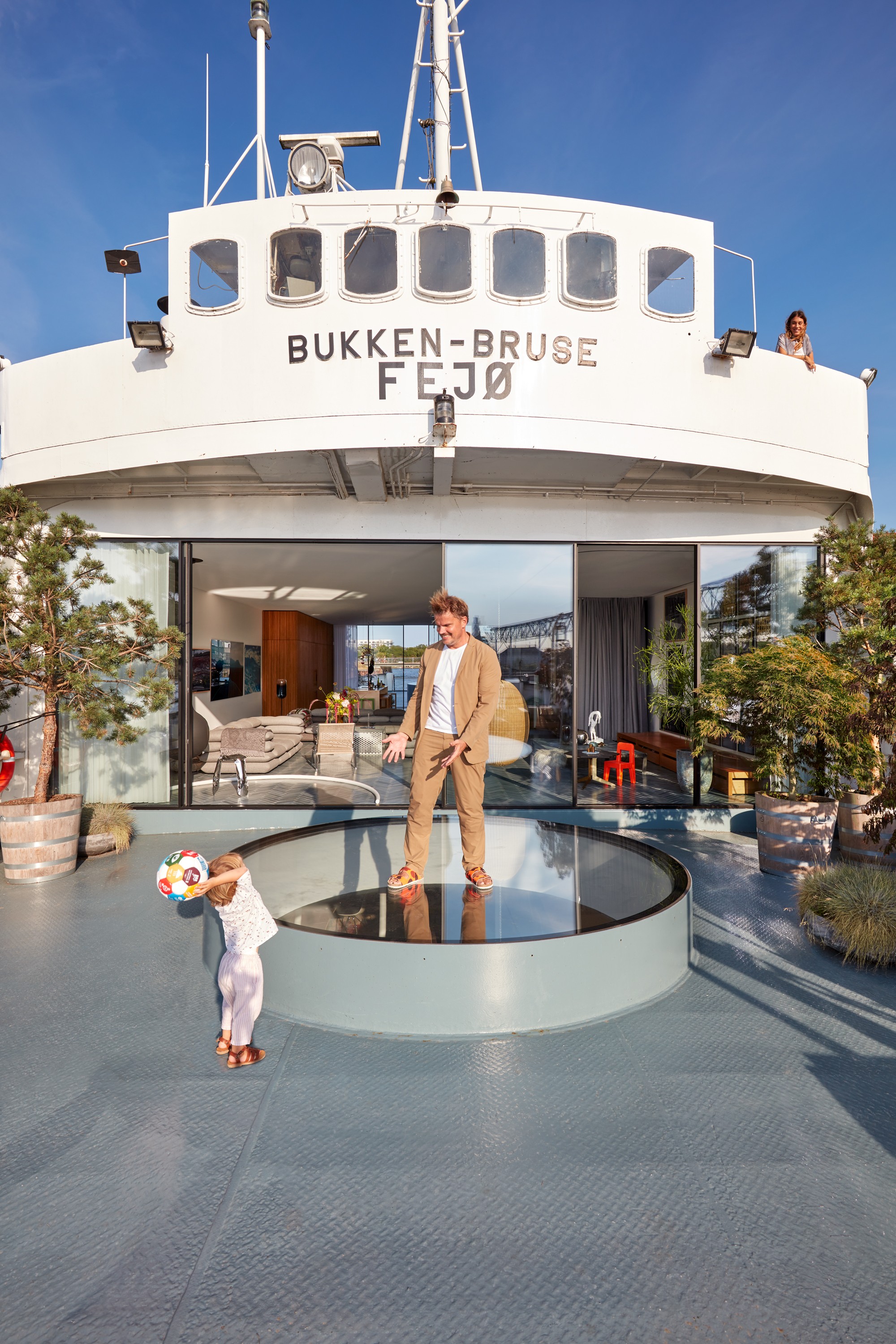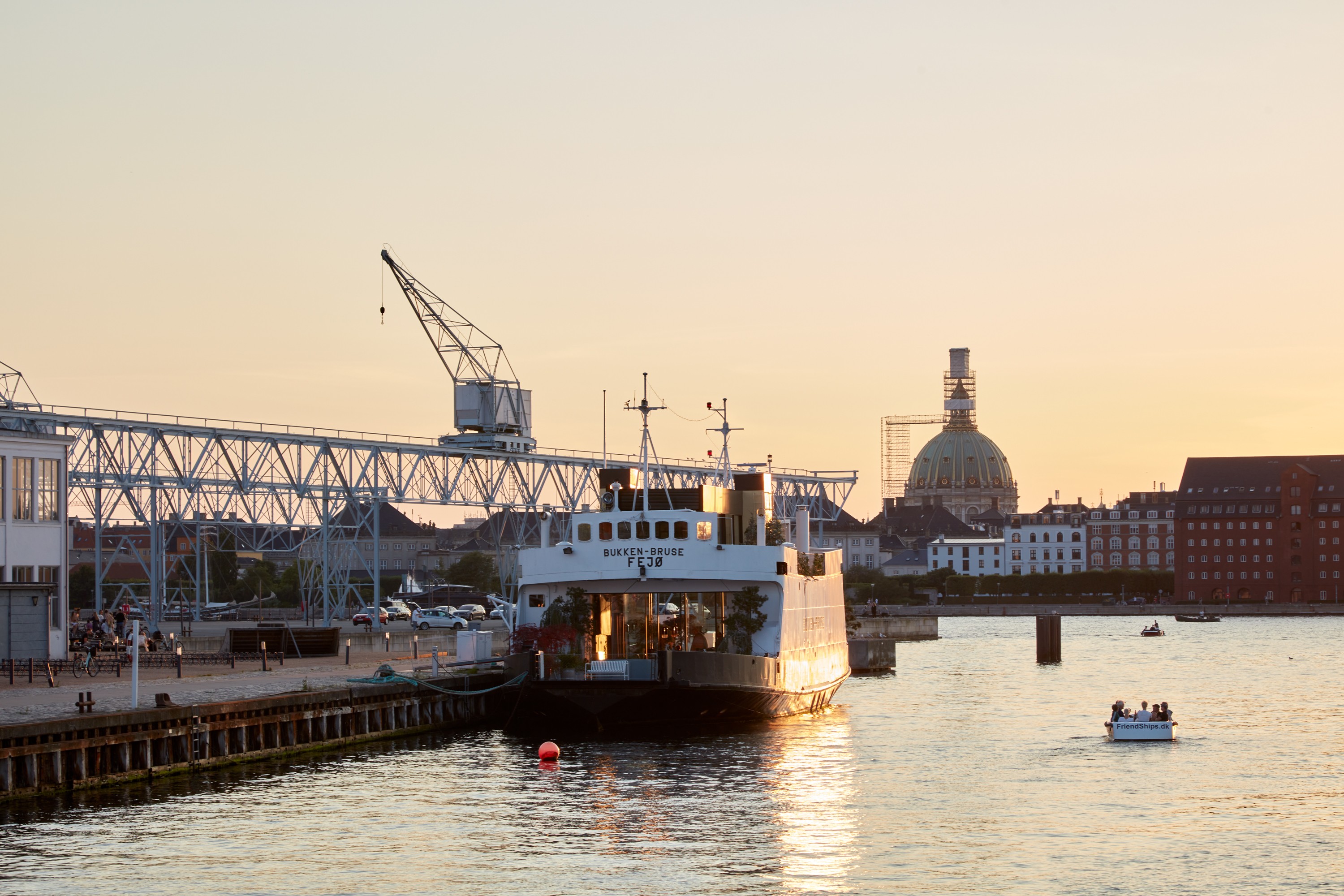April 2024
Reference
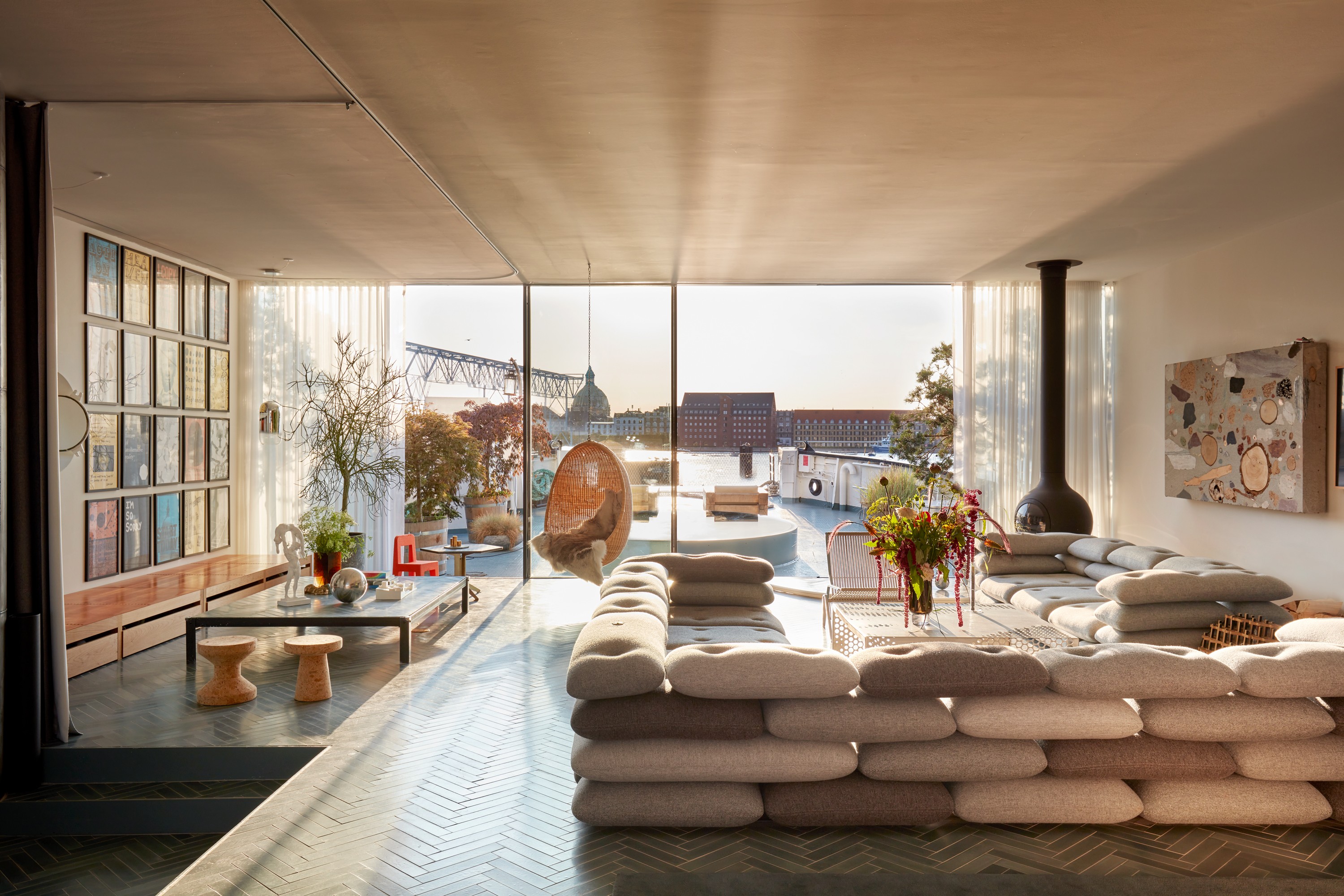
Earlier this year, Darwin Otero Ingels, the son of Bjarke Ingels and Rut Otero, said his first word: agua, or “water” in his mother’s native Spanish. That he should have H2O on the brain is no surprise. For much of his existence, this intrepid toddler, now almost two, has dropped anchor in Copenhagen’s harbour, cohabitating on a houseboat with his two architect parents. Imagine, among your earliest experiences, the sight of ducks swimming past porthole windows, the thrill of friends arriving by kayak, and the constant, calming churn of the tides—that’s just an average day for young Darwin.
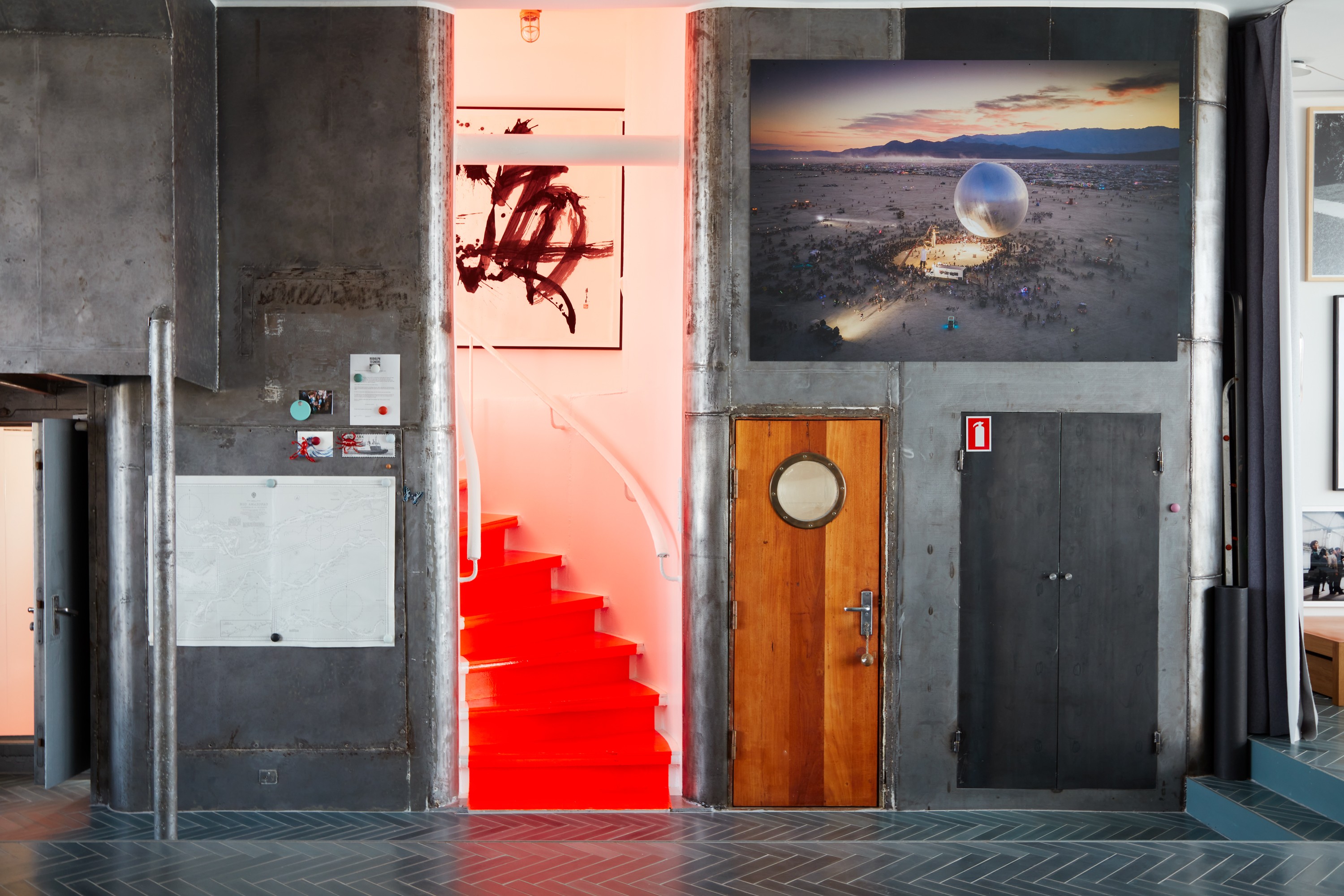
But life aboard the SS Ingels has not always been so charmed. When the Danish superstar bought the 126-foot-long vessel in late 2016, it was quite literally a shell of its present self: a decommissioned ferryboat that had been partly converted into a living quarters, with a container plopped on the roof for sleeping. It was docked then, as it is now, near a former industrial site that in recent years has evolved into a thriving hub of creativity. (His AD100 firm, BIG–Bjarke Ingels Group, has played its part, having completed a number of nearby projects, including the 2016 floating student-housing complex Urban Rigger; the new home of the restaurant Noma; and the innovative waste-to-energy plant Copenhill, cleverly topped by a ski slope.) Never mind that the houseboat was barely insulated. Ingels was sold. “It has the past, present, and future of Copenhagen all in one glance,” he says of the views. “Look east and you can see the sun rising. Look west and you can see the sun setting over the queen’s palace.”
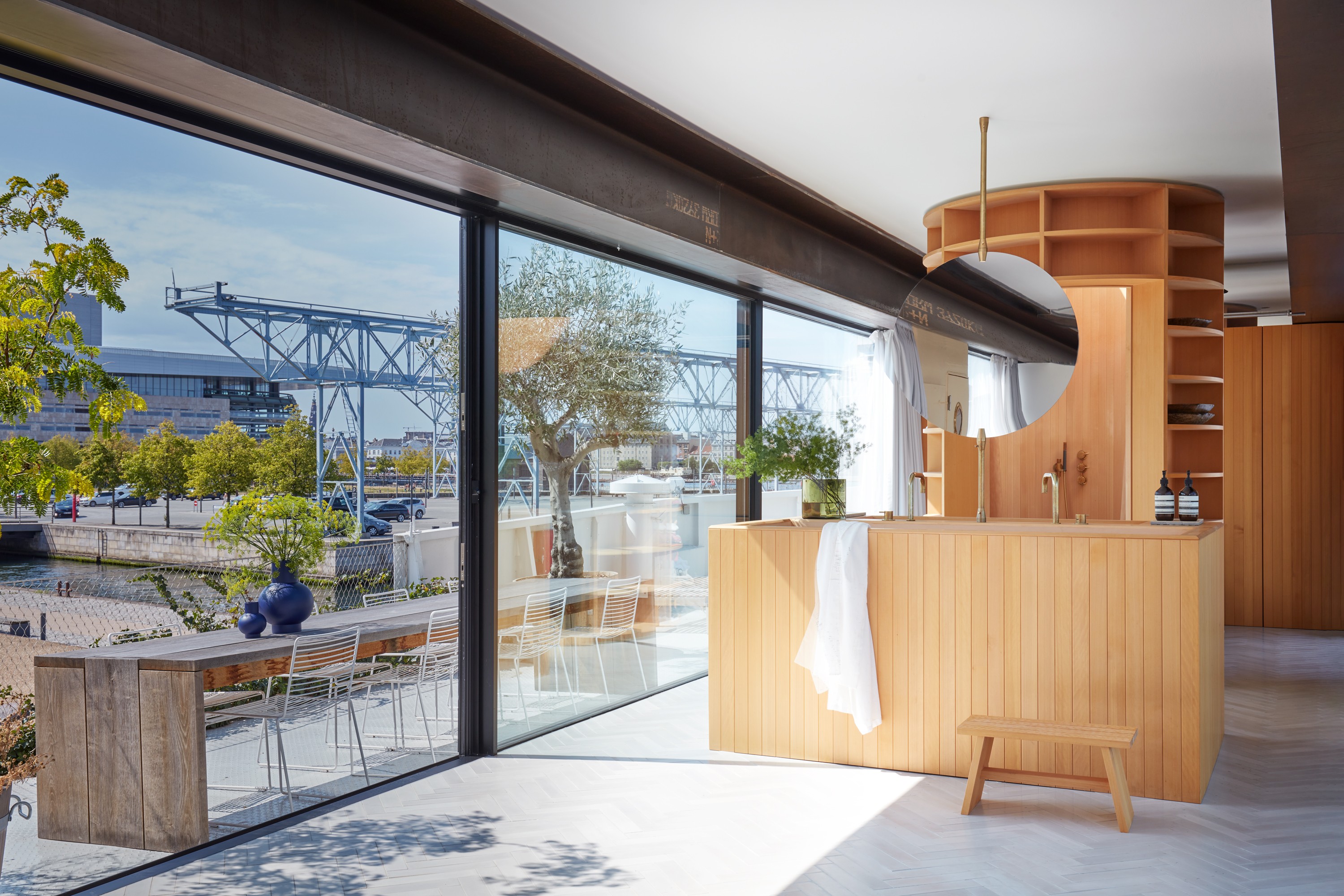
Those vistas may have distracted him from the enormity of the project at hand. “People had warned me that living on a houseboat was simultaneously the best and worst thing,” Ingels recalls. “When it’s great, it’s epically great. When it sucks, it sucks so massively.” So he and Otero discovered that first winter as they went without heat and running water at times, waking up to freezing temperatures and once resorting to bottles of San Pellegrino to bathe before a client meeting. But consider all that necessary hazing for the couple. “You start understanding what the ship is,” explains Ingels, noting that their survival skills and renovation plans were ultimately kicked into high gear by the prospect of Darwin’s arrival. As Otero puts it: “Living on a boat is a learning curve. Over time, it becomes clear what the spaces want to be.”
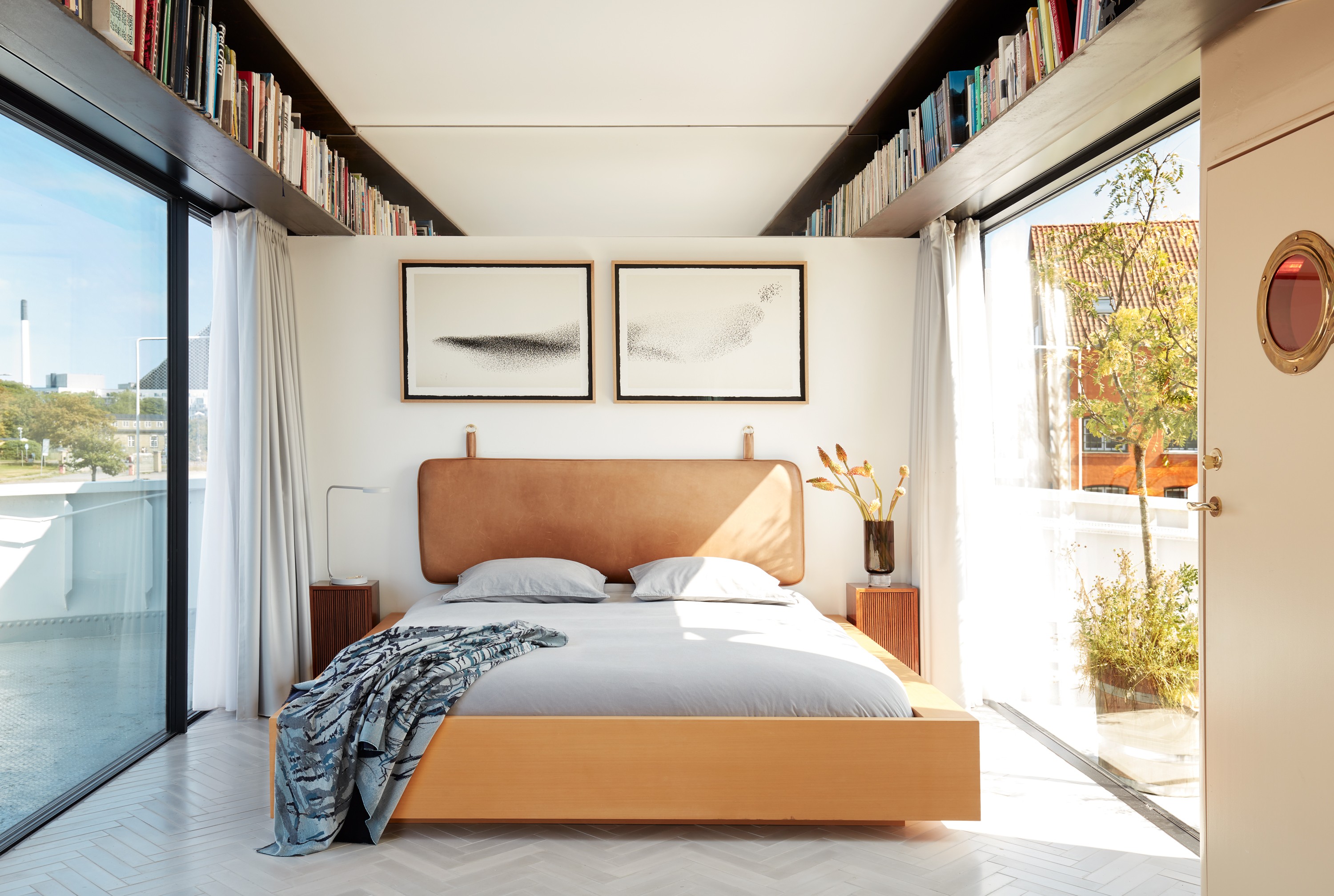
Ingels’s work, if at times hard to characterize by style, has long been defined by constraints—the preexisting conditions that steer his designs toward sophisticated, often shipshape solutions. “It is a boat, so it wants to be symmetrical,” he notes matter-of-factly. “Part of the project was restoring that symmetry along both axes.” At each end of the main deck (what was essentially an open driveway for cars) they installed sliding window walls, creating a loftlike living space with terraces painted the color of the water. On the upper level, meanwhile, they took their cues from the two large chimney stacks and navigation bridges, constructing a glass-enclosed pavilion for the main bedroom suite among the original structures. Above it, a rooftop terrace affords 360-degree views. And below deck, they transformed the hull into a futuristic playroom for all ages, stripping away additions to reveal streamlined curves, adding porthole windows and a circular skylight, and treating the walls, floors, and ceiling as a kind of continuous white surface.
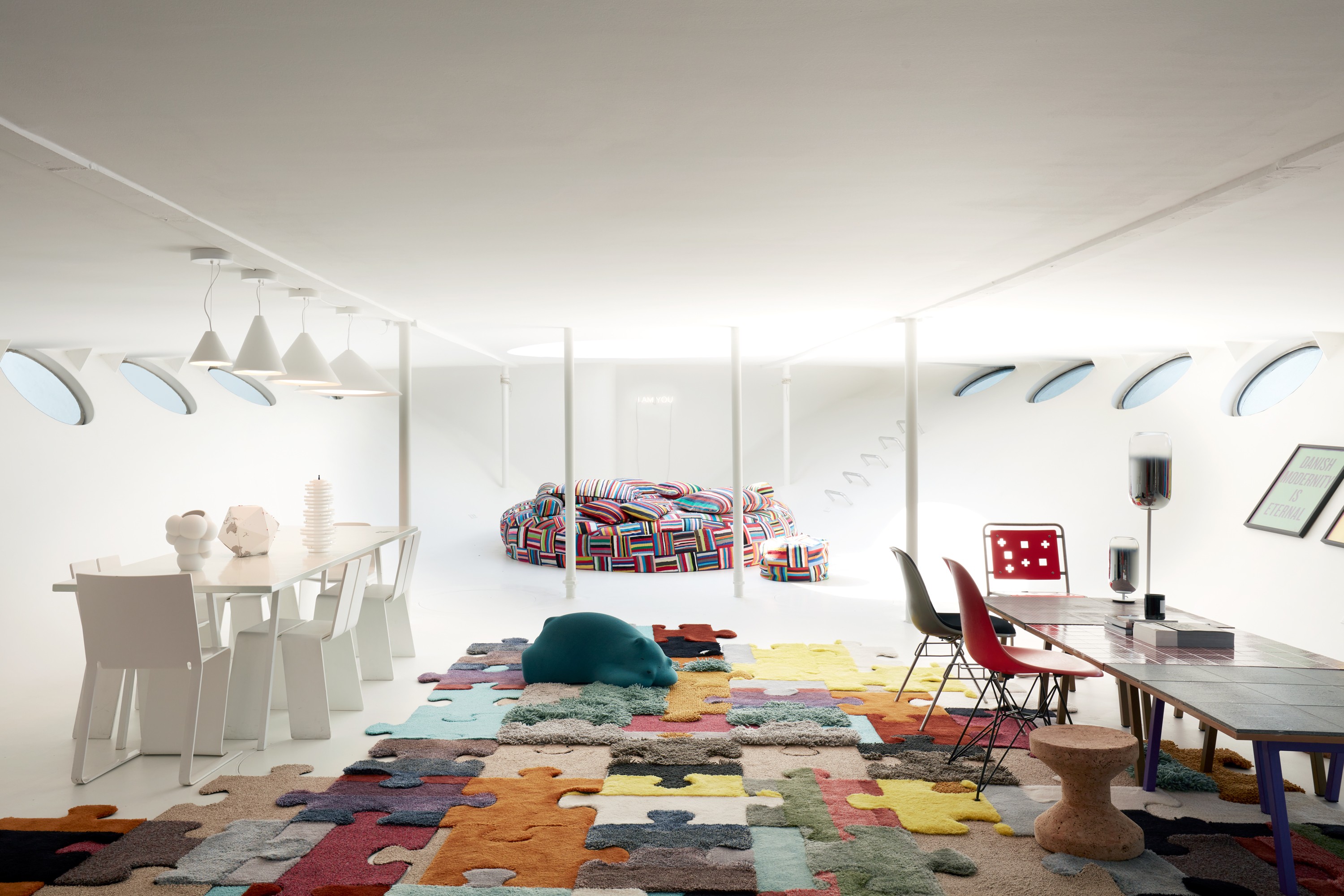
“We were given the gift of forms,” Ingels says, adding that he might never have come up with the design in isolation. “It’s a creative shift, shaped by different forces.” And while they took care to preserve the boat’s nautical quirks—among them the two captain’s cabins, with steering wheels for Darwin’s amusement—they have also incorporated mementos from their frequent peregrinations. (Travel is a major source of inspiration for both Ingels and Otero, whose namesake fashion line blends cultural references.) The couple’s bath, for instance, features a hinoki cypress soaking tub, sink, and shower that were inspired by their recent trip to Japan’s famous ryokans. And they found the playroom’s Technicolor beanbags and pillows (handwoven by South African artisans out of scraps of T-shirt fabric) during a 2017 visit to Cape Town for the opening of the Thomas Heatherwick–designed Zeitz MOCAA. These touches are joined by an array of Ingels’s own designs, from the living room’s KiBiSi sofas to the recurring Artemide lights.
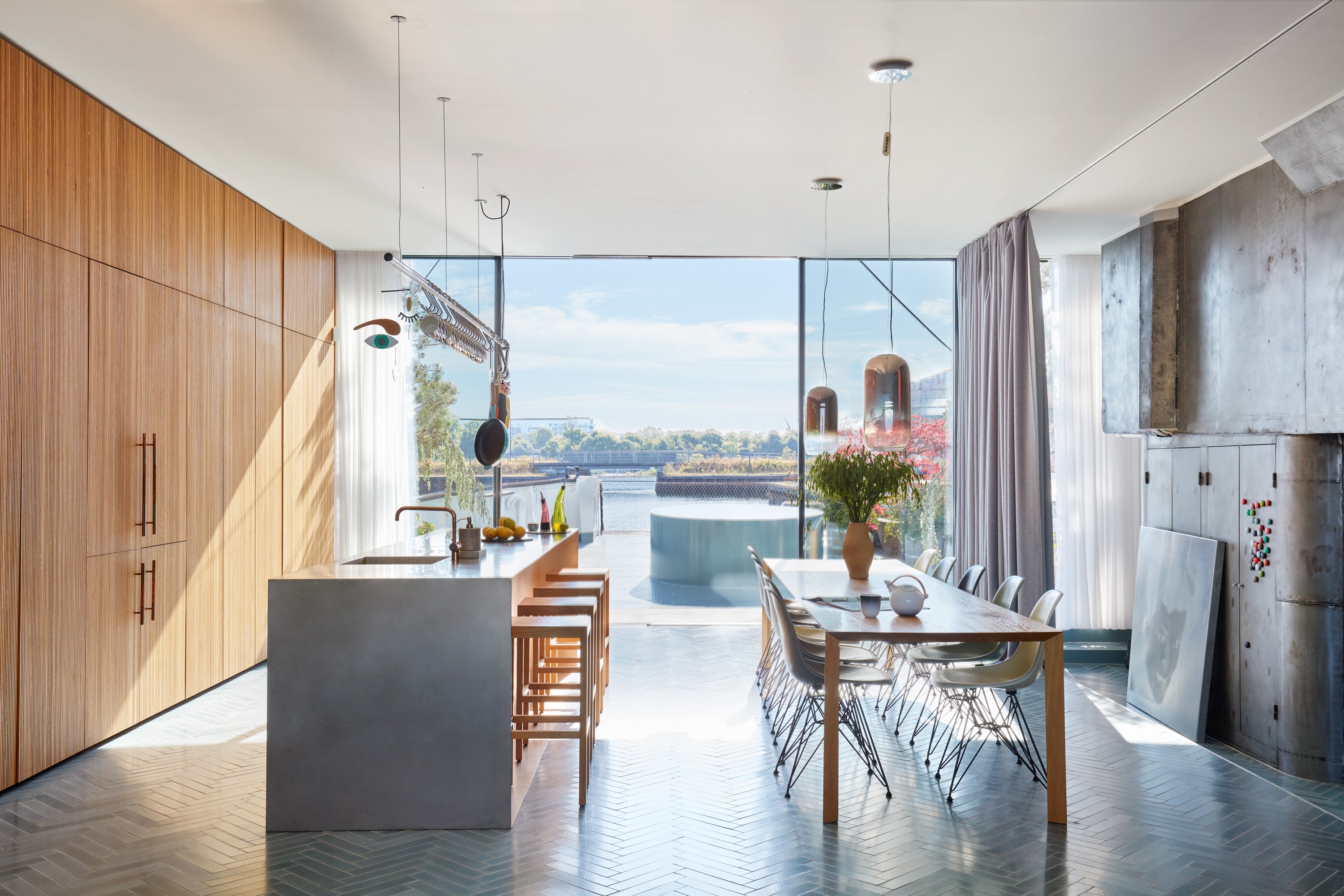
In ways big and small, the ship has been a chance for Ingels, who has long been a proponent of floating housing, to practice what he preaches. “It is the most resilient architecture,” he muses. “As sea levels rise, so will houseboats.” In addition to Urban Rigger, a system of standardized containers that helped address Copenhagen’s student-housing shortage, he has envisioned entire communities at sea. His Oceanix City concept proposes sustainable, modular structures for 10,000 people. On land, meanwhile, current projects such as The Big U (a protective coastal system for Lower Manhattan) and The Islais Hyper-Creek (a master plan for the southeast shoreline of San Francisco) address the realities of climate change. “Architecture traditionally is so static and permanent,” says Ingels, reflecting on his interest in the water’s edge. “This is dynamic and mobile.” As of late, of course, the houseboat has been not only a laboratory but a backdrop for virtual meetings. Reminiscing about a recent video call from below deck, he jokes, “People asked if I was on a spaceship.” At least, he was able to tell them, it was a ship.
